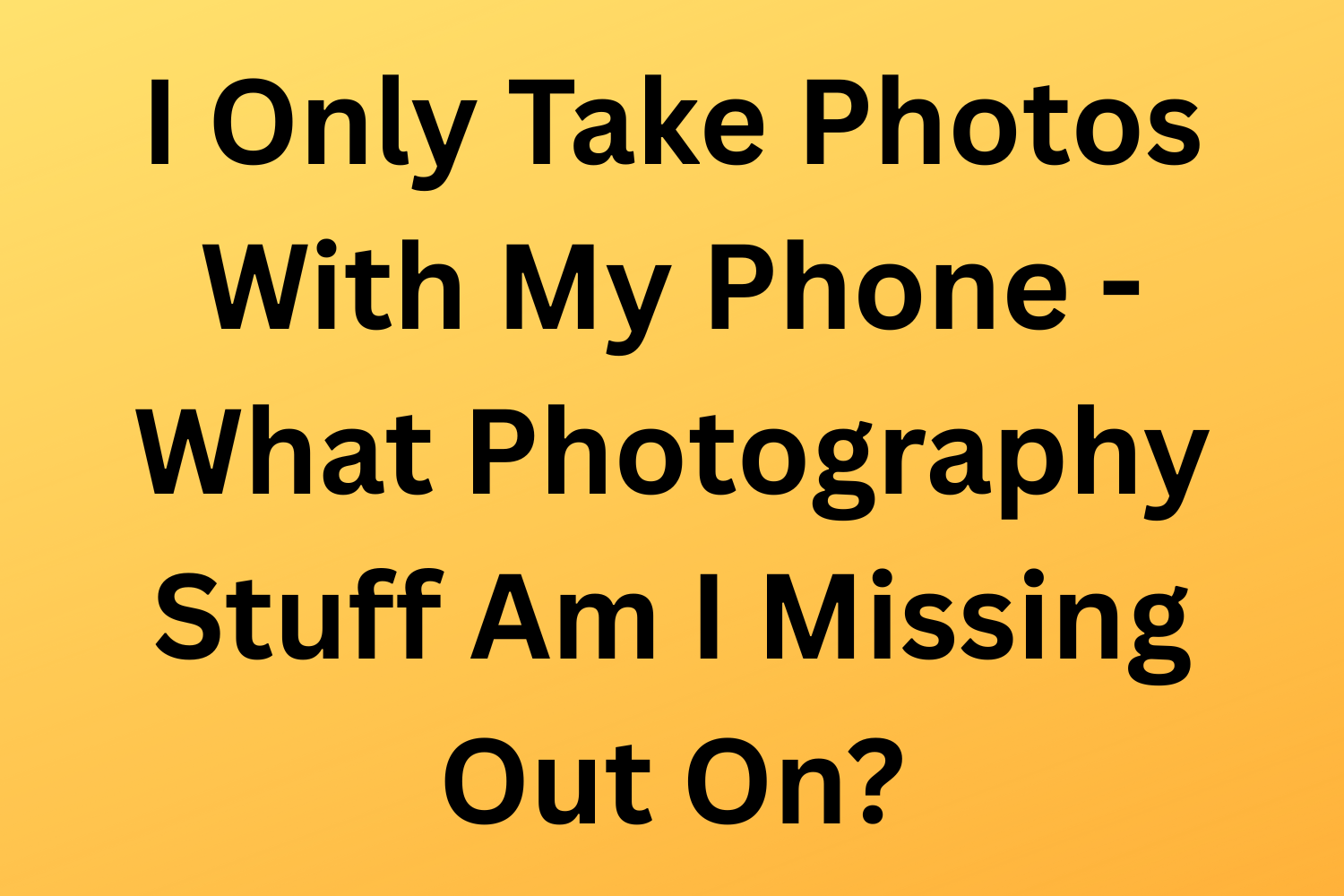
I Only Take Photos With My Phone - What Photography Stuff Am I Missing Out On?
If you only take photos with a phone you are missing out on many photographic things, such as
A thing ergonomically designed to take photos – yes a camera
Camera lenses
The taking photos with a camera experience
A much larger camera sensor
Gear to help you take better photos
And a whole world of photography stuff
OK - and some complicated photography stuff too
I know that phones are great and can take amazing photos, but let me tell you what you might be missing out on if you only use your phone to take photos.
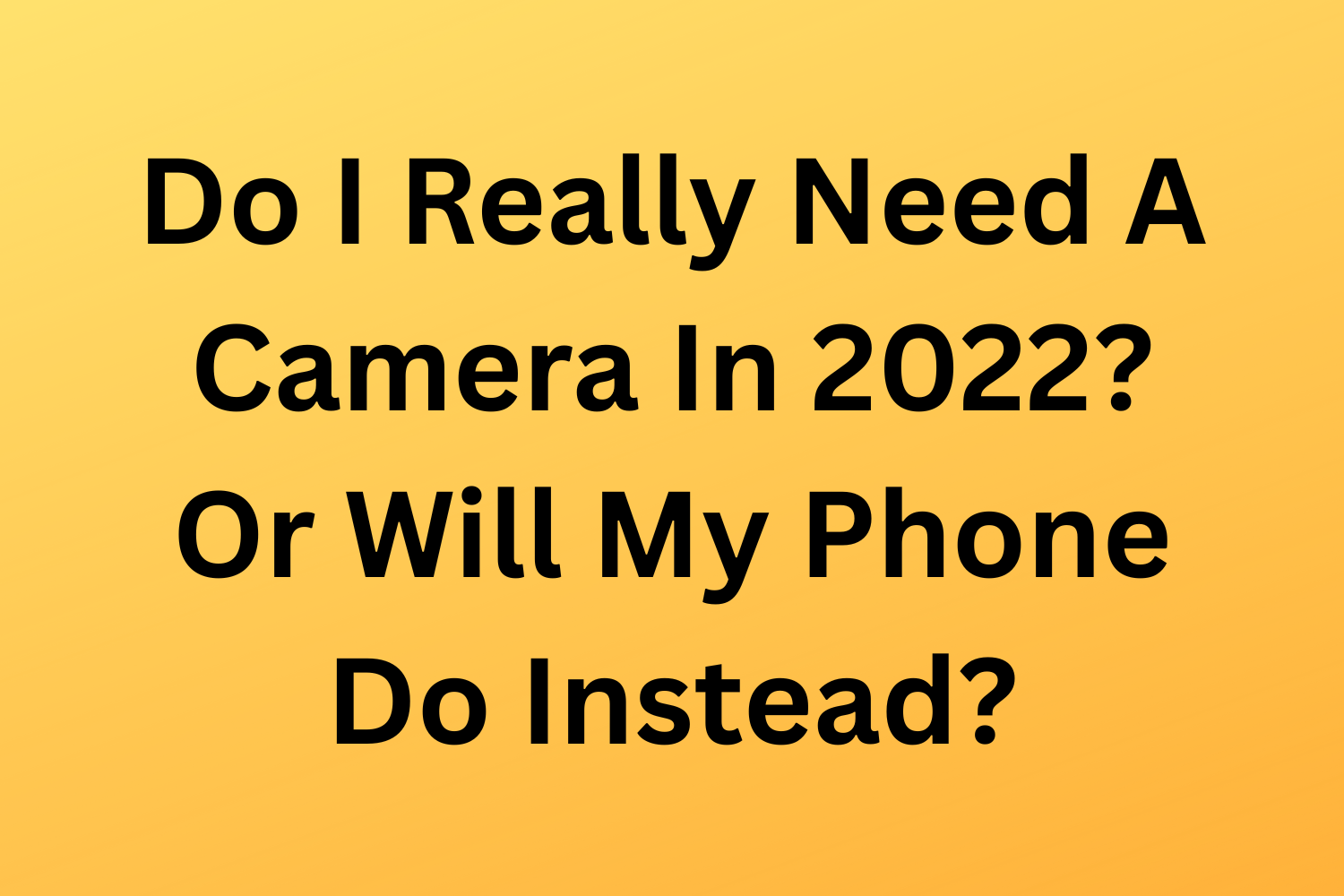
Do I Really Need A Camera In 2022? Or Will My Phone Do Instead?
If you want to explore the wonderful world of photography fully, you need a camera, even in 2022. Sure, you can get great photos with a phone, but buying a camera allows you to grow your photography without limits and fully embrace and enjoy the wonderful world of photography. Buy a camera, and you open up a world of techniques, creative photo-taking possibilities and, of course, the gear to help you. In my humble opinion, you don’t get all of this with just a phone.

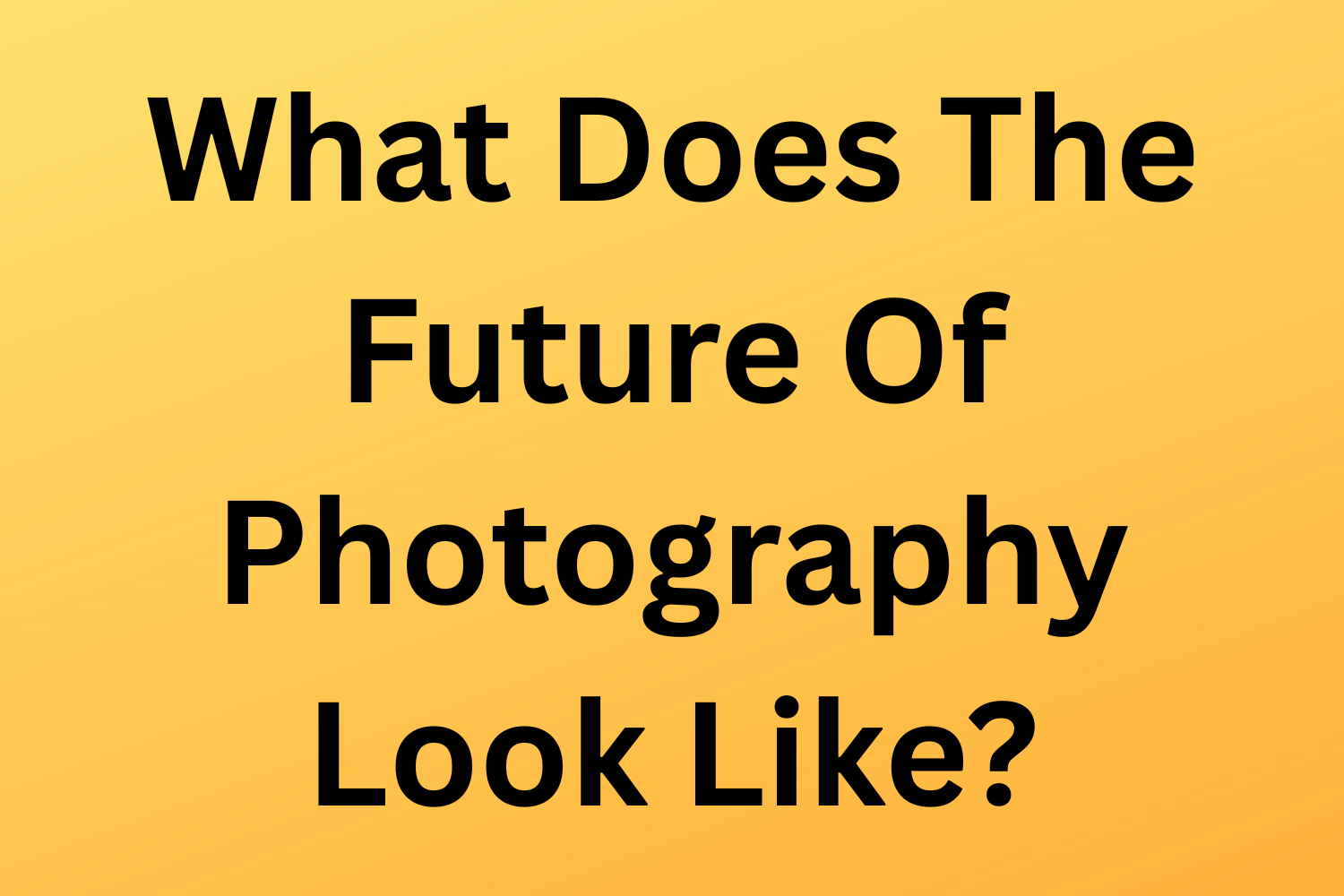
What Does The Future Of Photography Look Like?
The future of photography is very bright. The demand for images is higher now than ever, as is the number of photos being taken and shared. Photography has opened up to a global consumer market with advances in technology in phones and cameras.
How photos are taken, though, has changed, as has how people get into photography these days. The challenge is developing an interest in photography beyond basic phone photography.
The future of photography also has to cater for the constant need for immediacy - higher quality quicker. Or even higher quality immediately.

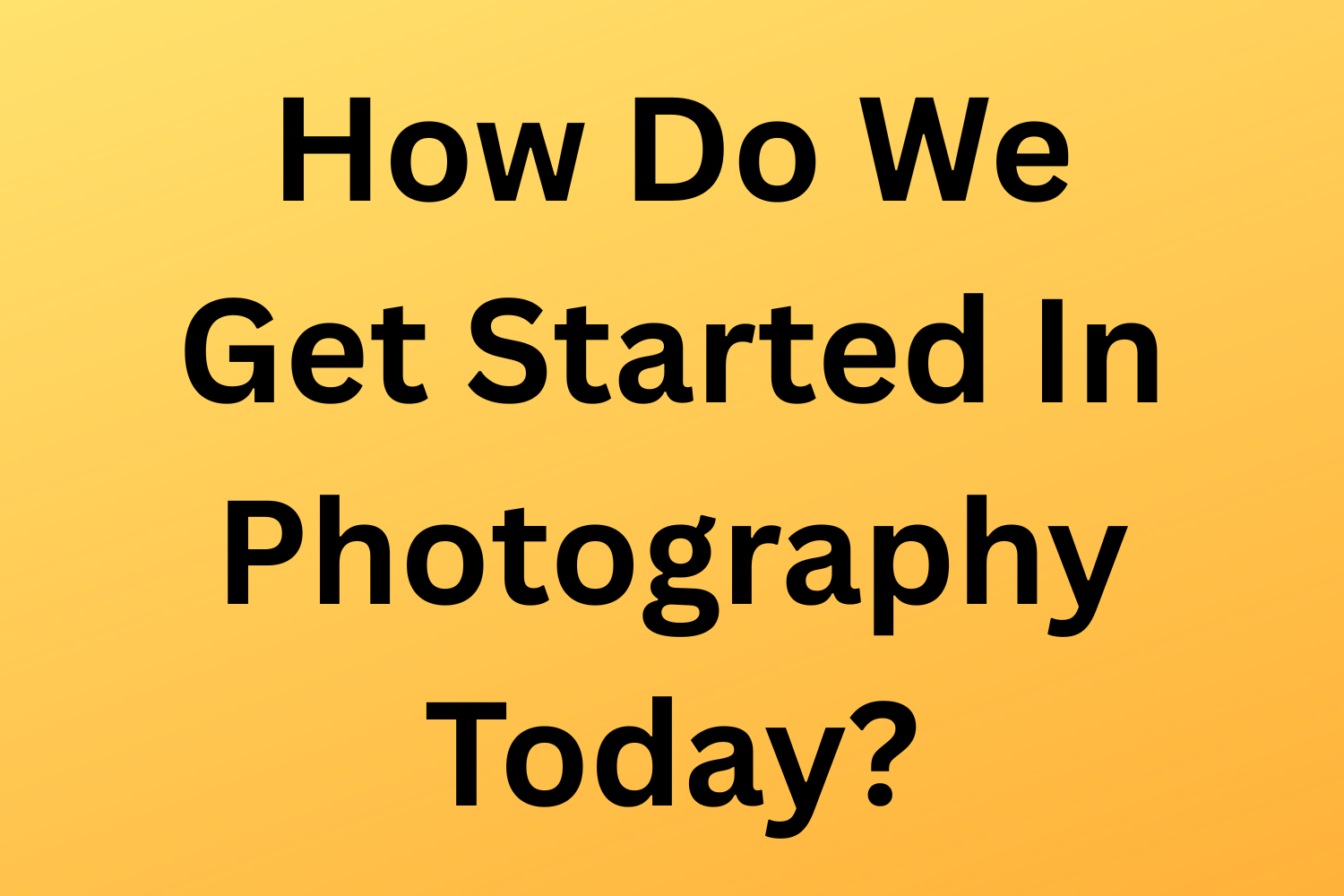
How Do We Get Started In Photography Today?
People get started in photography today by taking their new phone out of the box, turning the phone on, and taking photos. That is how people get started in photography today. Which is slightly less than when I got into photography all those years ago!
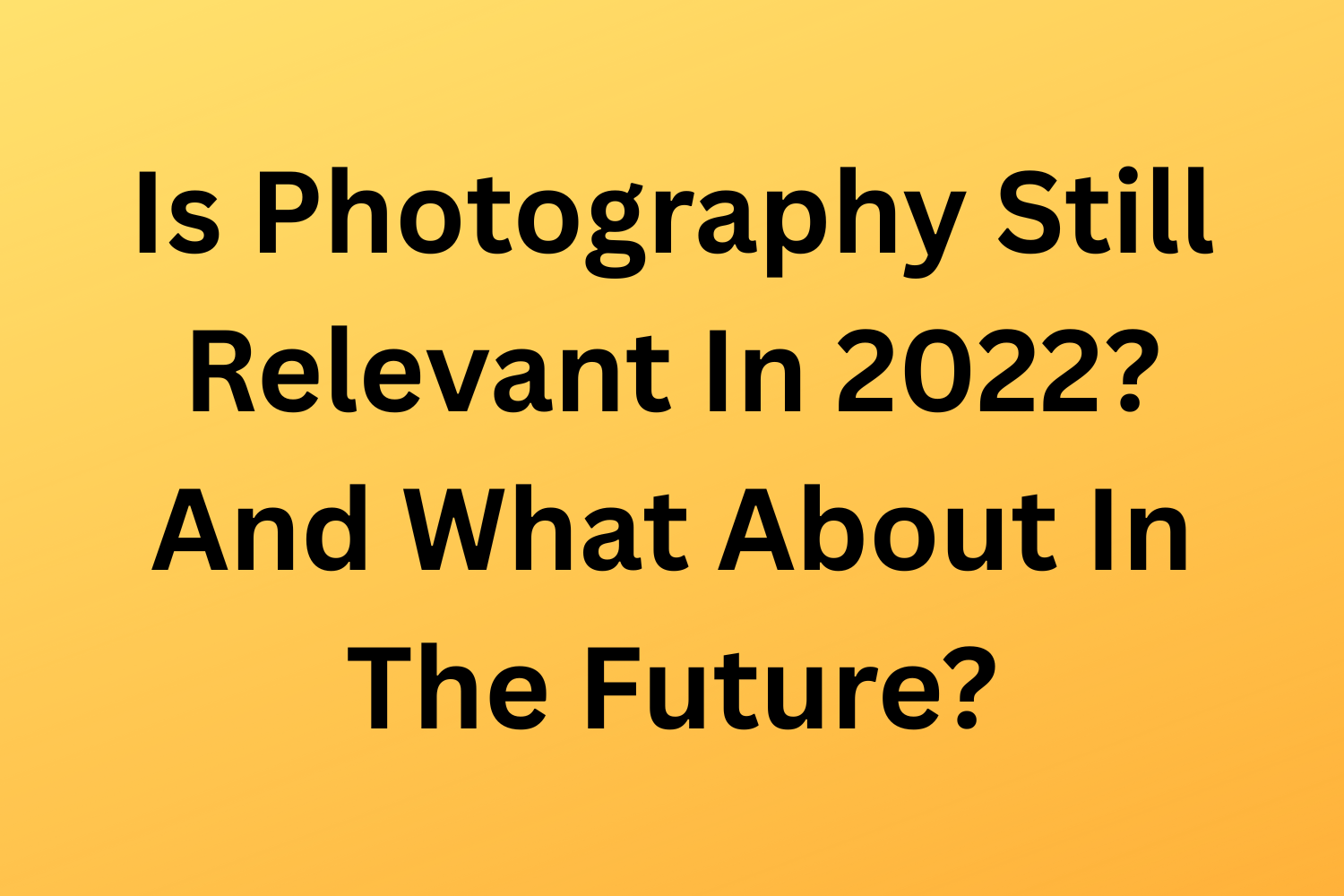
Is Photography Still Relevant In 2022? And What About In The Future?
Photography is bigger in 2022 than ever. There are probably more photos taken this year than ever before. So photography is still wholly relevant in 2022, with the growth being driven in part by the massive global popularity of social media. And this demand is only going to grow, with a growing population and technology becoming more and more accessible.
Photography is changing with trends and technology but is alive and well in 2022. There is a reason for this episode, which I will get on to in the next episode.

My Call For Questions From You. And Your Help.
When I started this podcast it was always my hope that my listeners would send in questions for me to answer. That has not quite worked out, so I am taking time in this episode to ask you for your questions, dear listener.


How Many Types Of Filters Are There In Photography?
There are many different types of filters in photography, which I will split into two distinct categories.
Ones that you attach to a camera lens
Ones that exist in software
Filters are used to enhance both image capture and images in post-processing.
Yes, having regretted picking this as the subject for this podcast episode, I realised that for a whole generation of people, filters are not things that you attach to a camera lens, but things that you apply in an App on your phone.
So in this episode, I am going to travel from when I was a young lad and bought things that I attached to my lens to the very modern day and filters in 2022.

Polarizing Filters - What Are They? What Do They Do? Do I Need One?
Polarizing filters are normally attached to the front of a camera lens, and filter out reflected light waves giving clearer images. Polarizing filters are used to reduce reflections, darken skies and also can enhance contrast, saturation, colours and vividness in a photo.

ND Filters - What Are They? What Do They Do? Do I Need One?
ND stands for neutral density. A neutral density filter reduces the amount of light that passes through the lens to the camera sensor. This gives the photographer more control over the camera settings that he or she can use, whilst still getting a correct exposure in a variety of lighting conditions. ND filters can be used in very bright conditions to help get the correct exposure or to reduce the depth of field. ND filters allow photographers to use longer shutter speeds in conventional lighting situations for creative reasons, such as to blur water, clouds or anything moving in the photo.